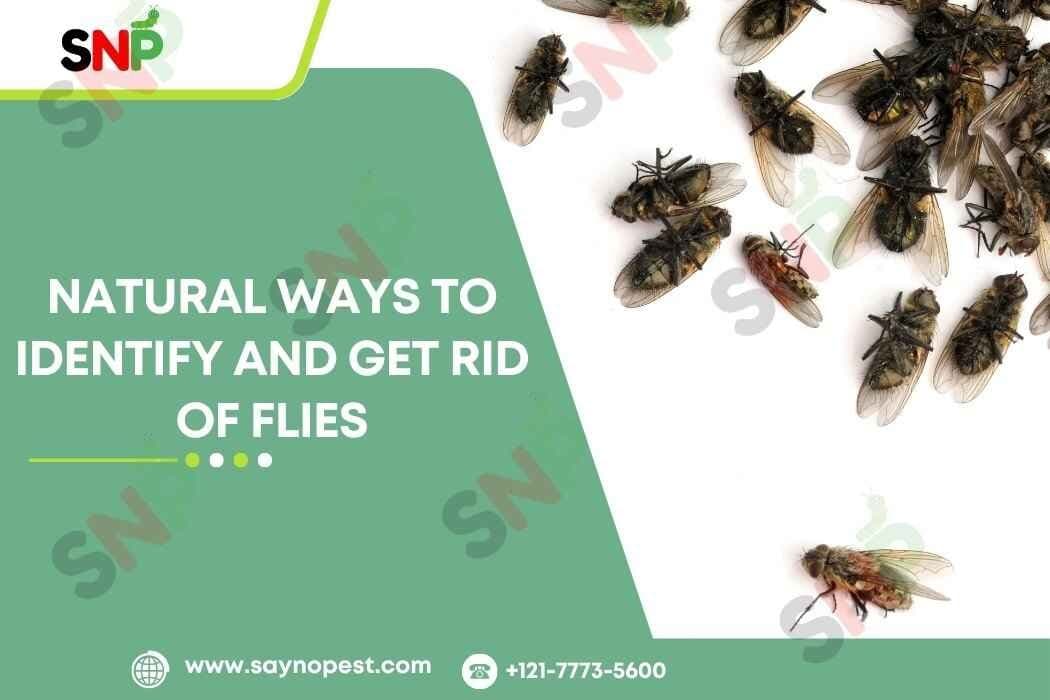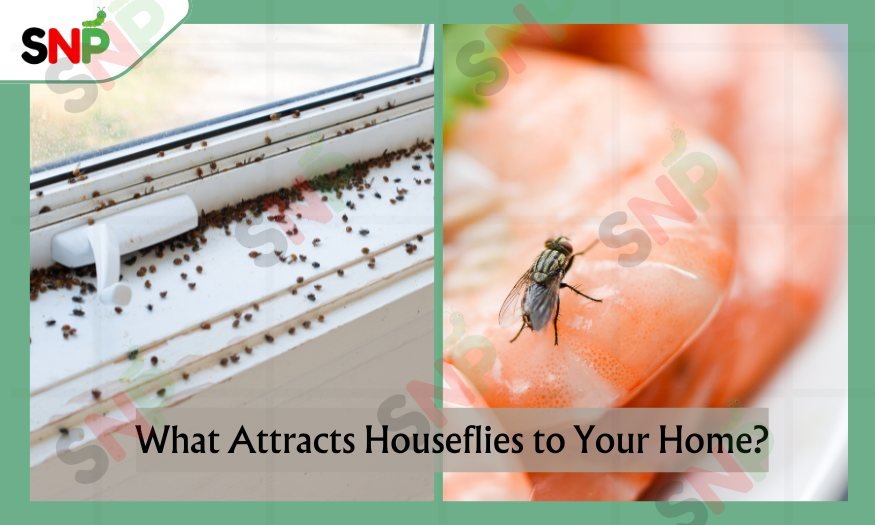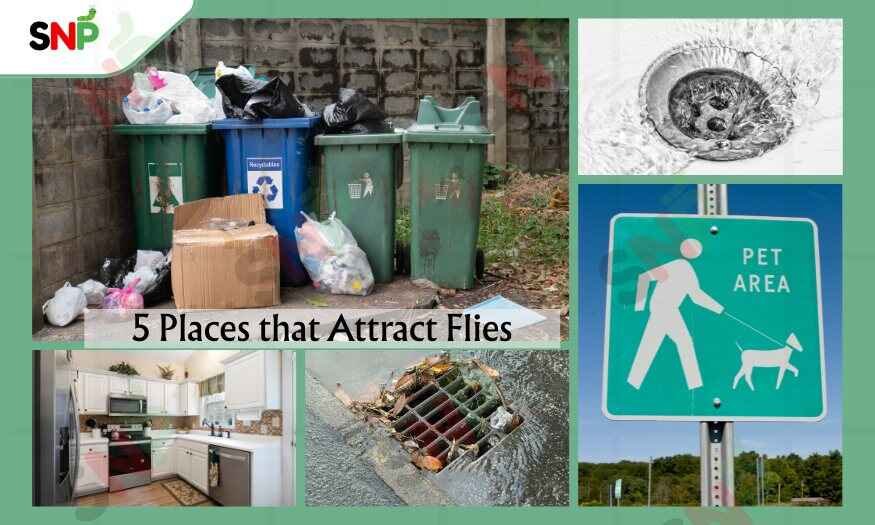6 Natural Ways to Identify and Get rid of Flies

Flies have an annoying presence and also carry diseases. It’s important to identify and get rid of flies completely. Understand what attracts these pests, where they feed, and safe ways to remove them. It will help you have a clean, healthy environment for your family.
You need to eliminate flies no matter if you have a few kitchen flies or a complete infestation. This will gradually make a healthier environment for your family.
What Attracts Houseflies to Your Home?

The most powerfully smelling foods and materials that are most likely to turn into breeding sites for flies. The primary attractions for flies include:
We can say that the things that are more likely to attract flies are:
- Unsealed garbage bins wand other waste: If you have decaying materials in your garbage bins, that is one possible factor that attracts flies. Seal your bins, as no one wants to have a smelly trash can, and neither do they want the flies.
- Standing water and moisture: Breeding sites included leaky faucets in the house, water-filled plant saucers in the garden, and any still bodies of water can be occupied by the flies.
- Uncovered food: The pet food or the leftovers of last night’s dinner in your kitchen are all subjects for the flies to challenge.
- Decaying vegetation: The waste found in the yard and compost piles are also places where flies can breed and feed.
- Humid environments: Flies attract the warm and humid weather. Flies grow faster and multiply in numbers when the temperature is high than when it is low. They also grow quite well in made conditions of high humidity. This case is more scaring because it contributes the most in the increase of the breeding of flies.
Your first sure way to nip the problem in the bud and not let it spread and get out of control now is to find the cause. It is a rather manageable step that will help you remove flies from your home.
Top 5 Places that Attract Flies

Flies can settle just about any place that has food, water, and a roof over their heads. Some well-known trouble spots are:
- Kitchens and pantries: Crumbs, spills, and the aroma of food are all that flies need to move in.
- Trash cans and recycling bins: The smell of decaying materials is what the flies can’t resist.
- Drains and sinks: The accumulation of organic matter that seals the drains gives them perfect breeding space, especially for drain flies.
- Pet areas: Dirty pet food bowls, litter boxes, and garbage excite flies, so they come back again and again.
- Dark and Damp Spots: Flies choose to rest in dark and poorly ventilated spaces that are also warm areas such as attics and basements and behind appliances when these areas contain clutter or dampness.
Your fly control strategy requires you to identify and eliminate fly breeding sites first.
Are Flies Dangerous?
Flies may look harmless but that is completely not the case. The most common type of flies cause diseases. They feed on trash bins, garbage, dead bodies, and livestock and as they do so, they become spreading agents of diseases, and parasites. These chemicals and parasites are the cause of bacterial and viral infections like typhoid, cholera, dysentery, etc. in the situation that flies have landed on your food or in your living area. Thus, even a small number of flies can quickly escalate into a large infestation which will add to health and comfort risk.
6 Natural Ways to Identify and Get Rid of Flies
Not every situation can be solved through chemical use so one must also be open to the idea of removing flies naturally. Liquid fly bait is a sure way of killing flies just in case you have trouble with them. Natural ways of Identifying & Getting Rid of Flies can be applied as well if the problem is in the early stages.
1. Apple cider vinegar and dish soap
Pour apple cider vinegar into a jar, add a few drops of dish soap, and close it with a plastic wrap poked with small holes. Flies come to the trap being attracted by the scent of vinegar, go into the jar and there they are trapped by the soap, unable to move or fly again.
2. Herbs and essential oils
Using essential oils and herbs like rosemary, and peppermint oil as a repellent to flies is a safer option. Fresh herbs can be placed near the door or oil diffusers and sprays spreading a citrus scent. These are the components of the homemade fly repellent.
3. Sticky paper or fly traps:
The strip flypaper is used by hanging it in areas where a lot of flies gather, so they get stuck once they touch it and can be gotten rid of quite easily.
4. Bottle traps:
This trap is effective and gentle to flies. They would fly to the bait and find it difficult to leave the trap, until they die of exhaustion or hunger. One of the environmentally friendly and least risky ways of reducing the fly population.
5. Clean the drains to get rid of the water:
Every 2-3 months, brush your drain pipes and use teas of boiling water or other organic solvents to wash away an organic substance which is a nest of drain flies.
6. Make hygiene a habit:
Wipe away scraps, mop up stains, and don’t let animal waste lay around the house. Apart from that, do not forget to properly close the trash cans and do garbage disposal regularly.
Conclusion–
The fight against flies does not need to result in defeat. A professional pest control service should be your first choice when persistent fly infestations become too much to handle because they will help keep your home free of flies while maintaining its health. Acting swiftly and persistently to identify and get rid of flies is necessary.
Related Posts
Introduction to Horse Fly Bites Stages
Each summer of the year across the United States arrive swarms of nuisances, one of the most irritating to humans and animals alike and the horse fly. It is advantageous to understand and be acquainted with the stages of horse fly bites in order to advance effective treatment, prevention, and overall comfort outdoors. Horse Fly […]
Black Fly Bites: All You Ever Wanted to Know
Introduction to Black Fly Bites Summer is a time of a lot of outdoor fun, but it also means a greater possibility of encountering some bugs few more stubborn in much of the US than black flies. Famous for their biting, stinging Black fly bites that itch you more than anything. These small bugs can […]
Introduction to Adult Life of a Crane Fly
You have darker summer nights and one of the long-legged flies is flying in and out of the front porch light on your porch. You are curious about the Adult Life of a Crane Fly. As foreboding in their size and bug-like in their appearance and similitude to a mosquito.They have a unique and harmless […]
Quick Link
Services
